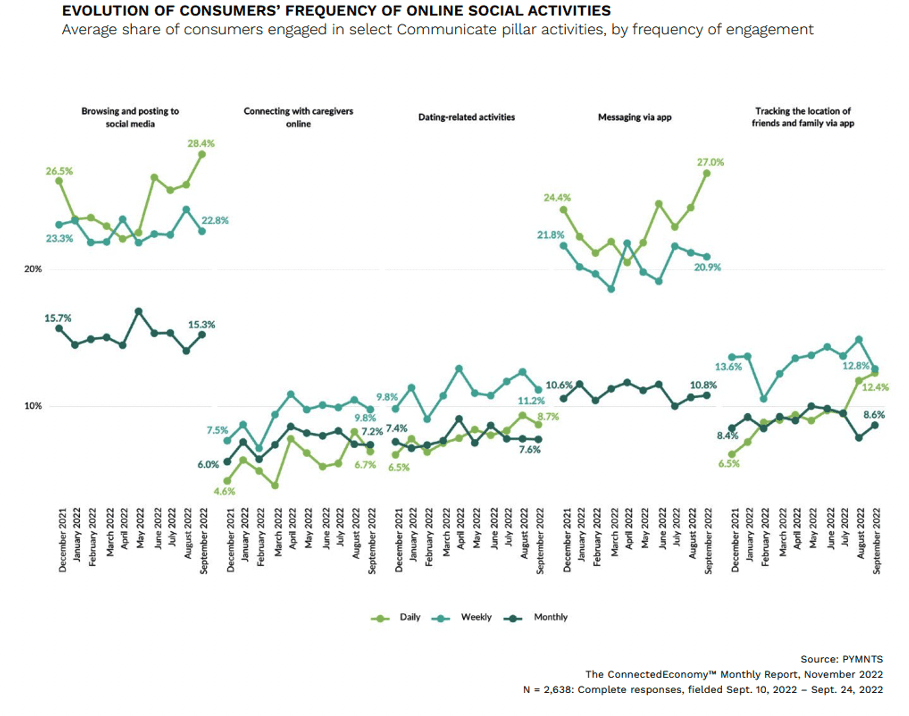Dating App Usage May Extend Valentine’s Day Until April for Restaurants
Valentine’s Day comes just once a year, but tableside eateries could leverage innovative partnerships to extend romance-driven profits throughout the calendar’s other months.
Feb. 14 is a key day for restaurateurs, as fine dining and other tableside eateries can reliably fill their tables with couples and groups. The year 2023 is expected to be no exception, as the National Retail Foundation estimated U.S. adults will spend a record $4.4 billion eating out to celebrate the holiday.
Unfortunately, no matter how booked a restaurant may be, it can’t make up for the slow times during the rest of the year. And 2022 was particularly slow for small business and owner-operator locations, as inflation and economic uncertainty ran rampant on supplier prices and consumers’ wallets.
PYMNTS found a possible trend that could benefit restauranteurs, however. The “ConnectedEconomy™ Monthly Report: The Who’s Who of the Digital Social Scene” found that in the three months following February, with an April peak, consumers increase their online dating interactions.

Giving a close look at the data, it’s hard to say if increased dating app use is a post-Valentine’s Day effect, triggered by the holiday’s romantic atmosphere, or another reason, such as consumers start looking for love as the days get longer and spring warms the Northern Hemisphere.
The motivations behind this increased use for restauranteurs may matter less, however, than the increased use itself and how the activity may translate to more bookings. As eating out has long been a go-to date idea, table-service restaurants in particular have an opportunity to capitalize on this trend.
There are multiple strategies an eatery may choose, including joining platforms such as EatApp, or OpenTable. However, a more digitally connected yet community-based approach may be found in some level of partnership with dating and other meet-up platforms to host events and get-togethers. This may be as informal as reaching out to local groups on social media that get together in person and offering reserved space.
Or, depending on the venue and location, the opportunity could involve reaching out to online dating apps as a location for possible future events. Doing so may expose independent restaurants to larger swaths of potential patrons, who in turn may recommend the business to others through the all-important word of mouth.
As dating apps usually skew toward younger generations, this exposure may resonate most with digital-savvy millennials and members of Generation Z. Both exhibit a preference for cutting back on eating out to combat inflation. Small full-service restaurants, which are typically a step behind in digital connectivity, may find traditional promotion to this generation extra challenging. With costs often being a factor in restaurant choice, a guaranteed larger group could even permit some flexibility in restaurants offering event-focused food or drink discounts to attract more goers.
With Valentine’s Day around the corner and romance in the air, consumers will soon be likely looking for love. Last year, the spring season saw a restaurant rebound, and while inflationary headwinds may find that bounce difficult to recreate, tableside eateries may possibly claw back some much-needed revenue by finding dating and social app-related events or other hosts to collaborate with.
